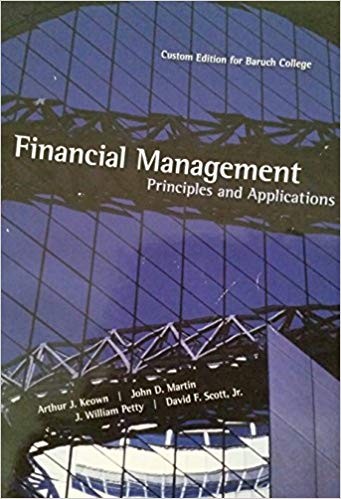Question
Stock R has a beta of 1.5, Stock S has a beta of 0.85, the required return on an average stock is 10%, and the
Stock R has a beta of 1.5, Stock S has a beta of 0.85, the required return on an average stock is 10%, and the risk-free rate of return is 6%. By how much does the required return on the riskier stock exceed the required return on the less risky stock? Round your answer to two decimal places.
HR Industries (HRI) has a beta of 1.5; LR Industries's (LRI) beta is 0.6. The risk-free rate is 6%, and the required rate of return on an average stock is 13%. The expected rate of inflation built into rRFfalls by 1.5 percentage points, the real risk-free rate remains constant, the required return on the market falls to 10.5%, and all betas remain constant. After all of these changes, what will be the difference in the required returns for HRI and LRI? Do not round intermediate calculations. Round your answer to two decimal places. %
Calculate the required rate of return for Mudd Enterprises assuming that investors expect a 3.5% rate of inflation in the future. The real risk-free rate is 1.0%, and the market risk premium is 6.0%. Mudd has a beta of 1.7, and its realized rate of return has averaged 9.5% over the past 5 years. Round your answer to two decimal places. %
Step by Step Solution
There are 3 Steps involved in it
Step: 1

Get Instant Access to Expert-Tailored Solutions
See step-by-step solutions with expert insights and AI powered tools for academic success
Step: 2

Step: 3

Ace Your Homework with AI
Get the answers you need in no time with our AI-driven, step-by-step assistance
Get Started


